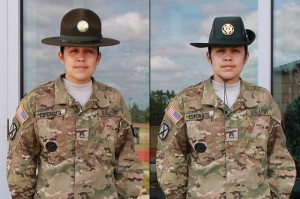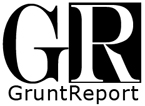
Soldiers weigh in on Army uniform changes
Soldiers should check their emails in the coming weeks for the chance to provide input on possible revisions to aspects of the Army uniform and wear policy.
Senior Army leaders, including Sergeant Major of the Army Daniel A. Dailey and Army Chief of Staff Gen. Ray Odierno, have authorized an online survey across all major commands to receive feedback on several uniform topics.
“The Soldiers are the ones who actually wear these uniforms. The senior leaders like to be informed by as many Soldiers in the field as possible [on uniform changes,]” said Sgt. Maj. James H. Thomson of the Institute for Noncommissioned Officer Professional Development.
Survey questions include opinions on gender-specific headgear for drill sergeants. Since 1972, female drill sergeant campaign hats have featured a raised brim and, as of 1983, a deeper green color. The survey, designed to crosscut a large section of Soldiers, will ask if there should be a single campaign hat for both male and female drill sergeants.
Consideration of a gender neutral aesthetic is not limited to drill sergeant attire. The service cap is also being considered for conversion to a gender-neutral version. Today, the male service cap features a wide bill, while its female counterpart has a raised brim on either side. The survey asks Soldiers whether or not they see merit in continuing the distinction.
The survey additionally seeks input on prescribing the service cap as required headgear for senior noncommissioned officers and above, in lieu of the black beret, when wearing the Army Service Uniform, or ASU.
Dailey has suggested an optional “Eisenhower jacket” to be added as a more appropriate indoor alternative to the black windbreaker jacket. Named for President Dwight D. Eisenhower and designed in the late-1930s, the jacket is waist-cropped, includes additional pockets and does not require many adornments. The last modification of the shortened, British-inspired jacket was seen in 1965. The survey asks Soldiers’ opinion of a version of it for all ranks.
Outside of formal dress, the survey also asks for Soldiers’ thoughts on black socks with the physical training, or PT, uniform. The suggestion came up at several town hall meetings Dailey conducted, and is now being sent out across various commands for evaluation.
“We’re hearing from the force, and we want to hear a little bit more,” Thompson said.
The cost environment for the latest potential uniform changes is unknown, but the fiscal impact on both the individual Soldier and the Army will be considered before any decisions are made. The results of the survey will provide Army senior leaders valuable information on what uniform changes should be considered.
As a joint effort of the U.S. Army Training and Doctrine Command, or TRADOC, and the Army Research Institute, the uniform survey will be conducted in the coming weeks with results expected in early August 2015.
“The one thing about Soldiers is that they all have their opinions and like to share them when it comes to the uniforms,” Thompson said.
Soldiers, who are invited to participate in the survey, will get an email invitation with instructions on how to log in to the online questionnaire.





Leave a Reply